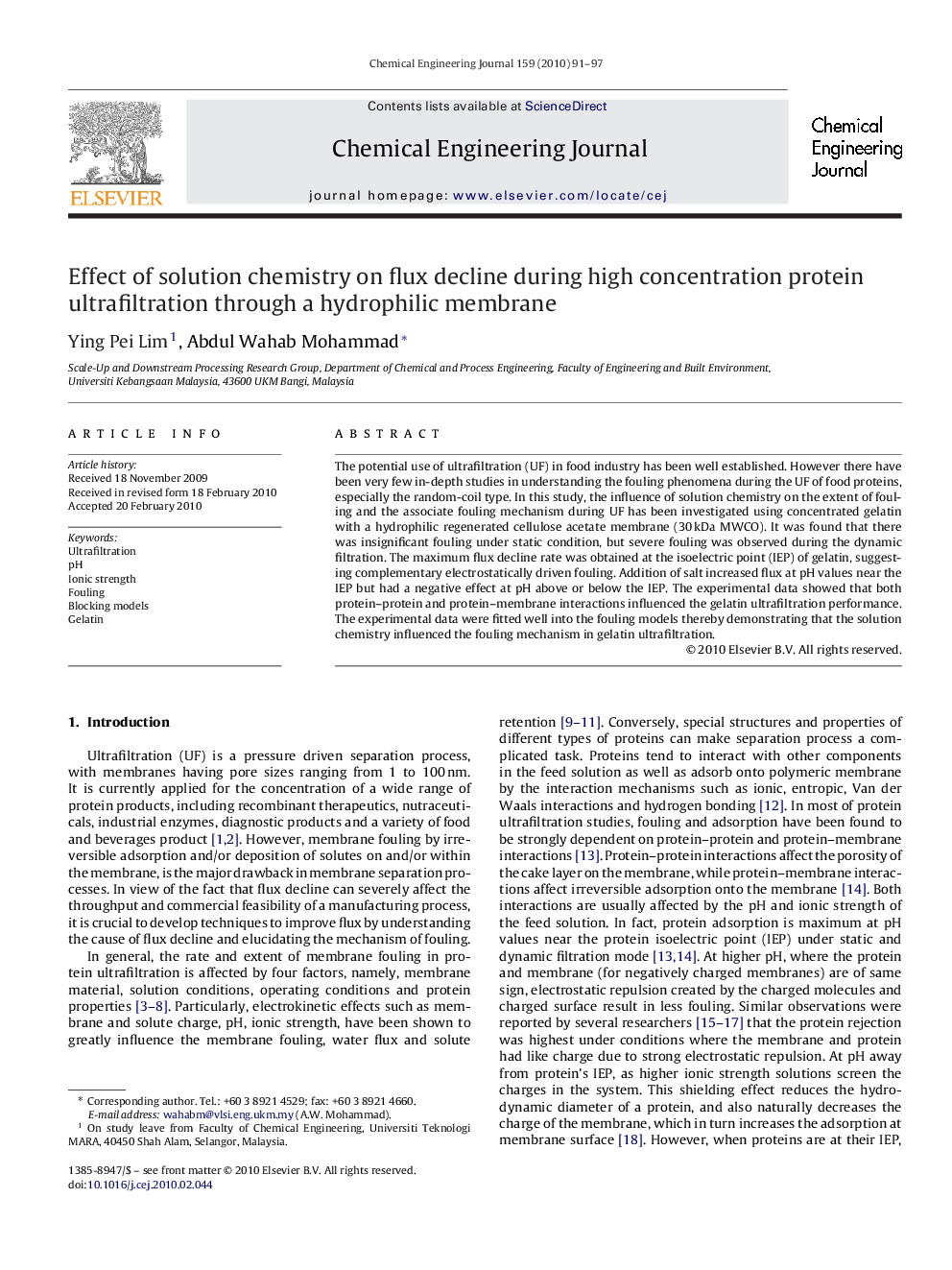| Article ID | Journal | Published Year | Pages | File Type |
|---|---|---|---|---|
| 152507 | Chemical Engineering Journal | 2010 | 7 Pages |
The potential use of ultrafiltration (UF) in food industry has been well established. However there have been very few in-depth studies in understanding the fouling phenomena during the UF of food proteins, especially the random-coil type. In this study, the influence of solution chemistry on the extent of fouling and the associate fouling mechanism during UF has been investigated using concentrated gelatin with a hydrophilic regenerated cellulose acetate membrane (30 kDa MWCO). It was found that there was insignificant fouling under static condition, but severe fouling was observed during the dynamic filtration. The maximum flux decline rate was obtained at the isoelectric point (IEP) of gelatin, suggesting complementary electrostatically driven fouling. Addition of salt increased flux at pH values near the IEP but had a negative effect at pH above or below the IEP. The experimental data showed that both protein–protein and protein–membrane interactions influenced the gelatin ultrafiltration performance. The experimental data were fitted well into the fouling models thereby demonstrating that the solution chemistry influenced the fouling mechanism in gelatin ultrafiltration.
